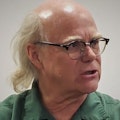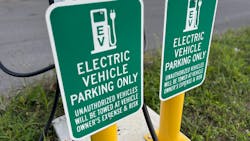As electric vehicles (EVs) keep selling - even without the $7,500 federal incentive - the myths, hype and partial truths about these vehicles are still abundant.
In this column, I'll review some of those "facts" and see if they hold up. We'll cover EVs and their components, as well as some of the related technologies that make them run and concerns about the power grid.
I make my living training technicians and others who need to know the how and why in EV technology, so you might think I'm biased. But I have been working on, learning about and writing about the hybrid and EV world for more than 25 years. Let's look at some more commonly held beliefs about EVs and EV technology:
- Sales of EVs are over since the incentives have been discontinued. False. This column was written in September, so we will see. Sales are expected to slow down. They will not go away. This slowdown may help the support systems to catch up, such as charging infrastructure, cell development, and more.
- Solid state battery cells will take over next year. False. The expense will be very high. Luxury sport cars? Maybe soon. Ducati motorcycles, owned by VW, will run on a solid-state lithium-metal battery, developed by QuantumScape and PowerCo in a race bike next year.
- Wind power is killing the birds. True. Other things cause more bird kills than wind power, but more is being done to lessen the impact of wind generation. There are ways to build safer wind farms for birds. Before construction, wind companies survey sites and place fewer turbines in areas most important for habitat. Scientists have found that painting one blade of a turbine black, which increases visibility, can reduce bird fatalities.
- Battery packs are piling up at landfills. False. The older nickel metal cells (not used in modern EVs) are recycled and have been for years. Recently the lithium cells used to make hearing aids to Tesla’s packs are being recycled back into the cathode that is then put back into a new cell.
- The Tesla NACS superchargers are powered by diesel generators. False. There are no dedicated fast chargers powered by diesel generators in the United States; the EV charging network relies on the electrical grid. There may be solar panels in remote areas such as the Utah/Nevada deserts with no grid power to power the chargers with diesel back up, but it would be just a few.
- Tires are polluting the water with micro particles of rubber. True. Some two billion tires globally are sold each year. Many chemicals are released as they wear, and much of that tire dust gets into the water, air and soil. EVs have been the focus of this problem, but the issue has been known about long before EVs were here. The tire companies are working on a solution.
- Building a li-ion powered EV has a larger carbon dioxide footprint than manufacturing a gasoline car. True and false. It takes about 30,000 miles of driving an EV to get back to the carbon emissions needed to build a gas car. Then the EVs will have lower-overall emissions than gas cars. The longer the EV stays on the road, the better the comparison gets for the EV.
- EV battery production and mining create so much pollution that they cancel out the environmental benefits of EVs. False. Although battery manufacturing has a large carbon footprint, it is a one-time cost. A gasoline car, by contrast, emits carbon pollution every time it is driven. The facts confirm that EVs are responsible for lower levels of greenhouse gas emissions over their lifespan, compared to similar internal combustion vehicles. As electricity grids shift toward renewable energy sources, the environmental advantage of EVs will continue to grow.
- Our power grid cannot support EVs. Partially true. Widespread EV adoption is not expected to cause the power grid to collapse now, but if we do not continue with renewable energy to power the grid, a large increase in electric vehicles will overburden the U.S. power grid.
- The electromagnetic fields from EVs are causing cancer. False. Extensive testing and analysis have found that electromagnetic fields (EMFs) in EVs are below recommended safety limits and do not pose a cancer risk. A seven-country European Union study confirmed that magnetic field levels in EVs are safe, with maximum exposure being less than 20% of the recommended standards.
My company, Automotive Career Development Center, also instructs technicians in the medium to heavy-duty truck segment. More myths exist there, too. Engineers will improve the technology, as they always do, and costs will continue to drop. As the Beatles once sang, “It’s getting better all the time.”
About the Author

Craig Van Batenburg
Craig Van Batenburg is MTD's monthly EV Intelligence columnist and the owner of Van Batenburg's Garage Inc. dba Automotive Career Development Center, which provides training for facilities that service - or want to service - electric and hybrid vehicles. For more information, see www.fixhybrid.com or email Craig at [email protected].
